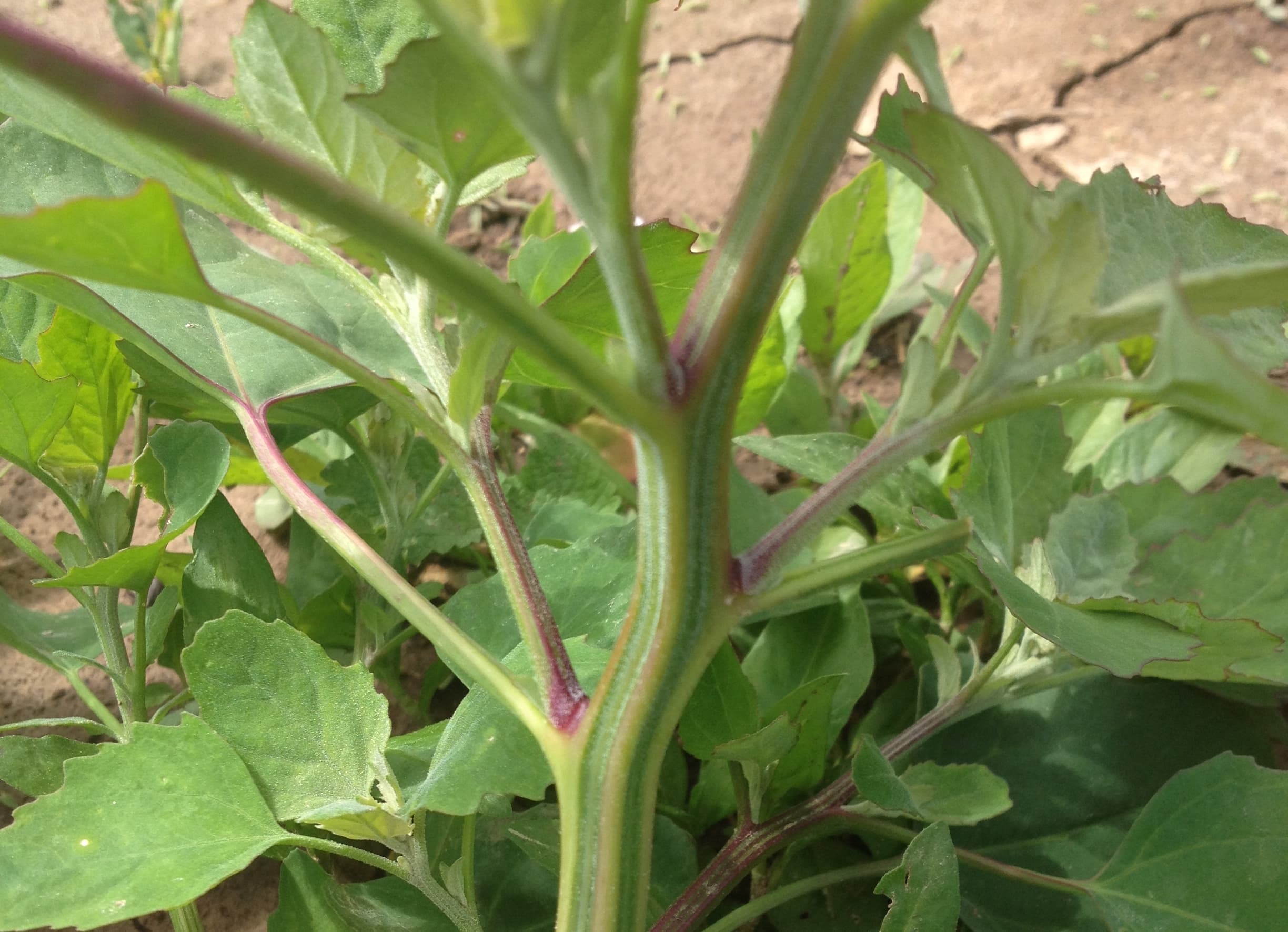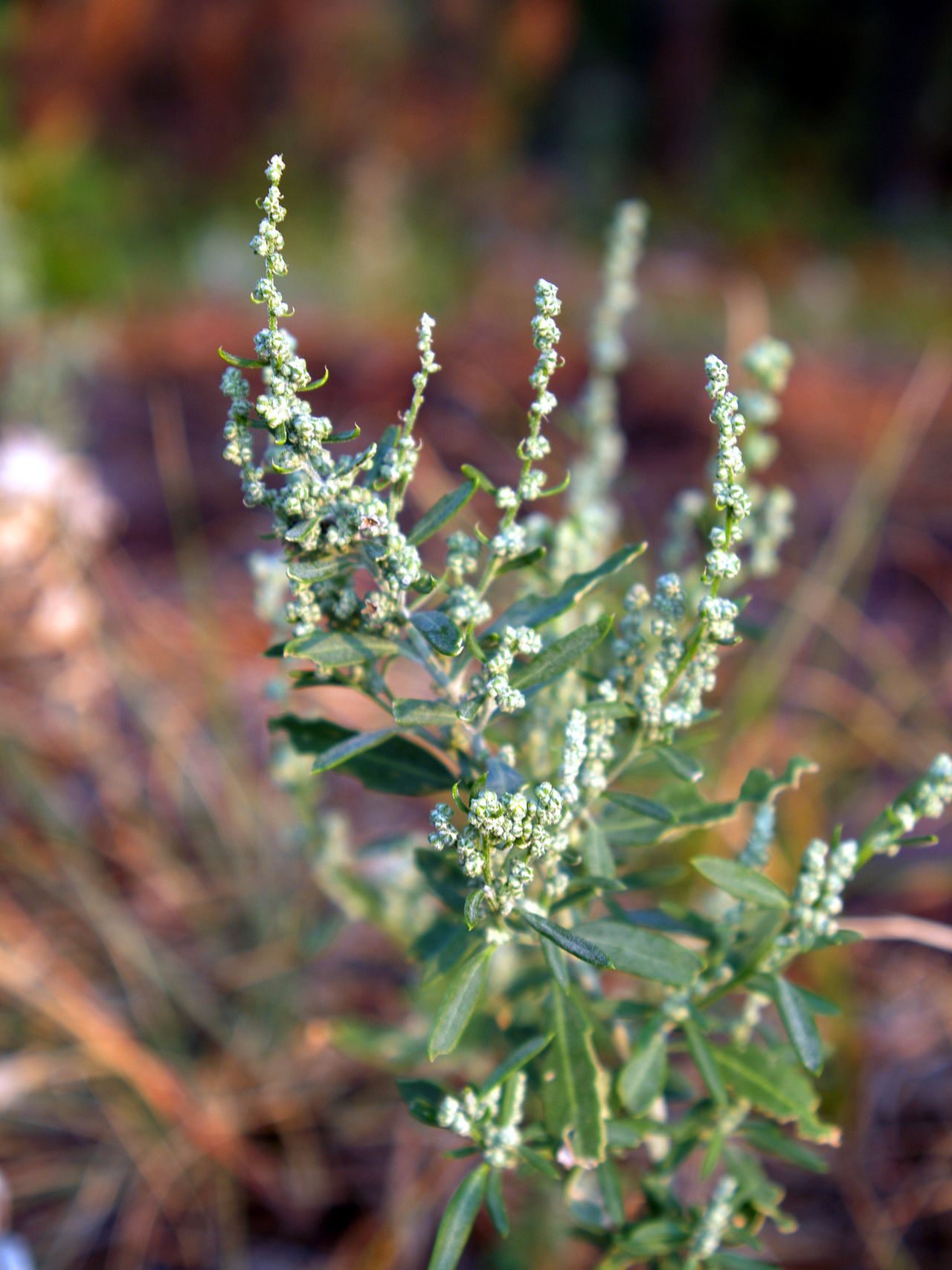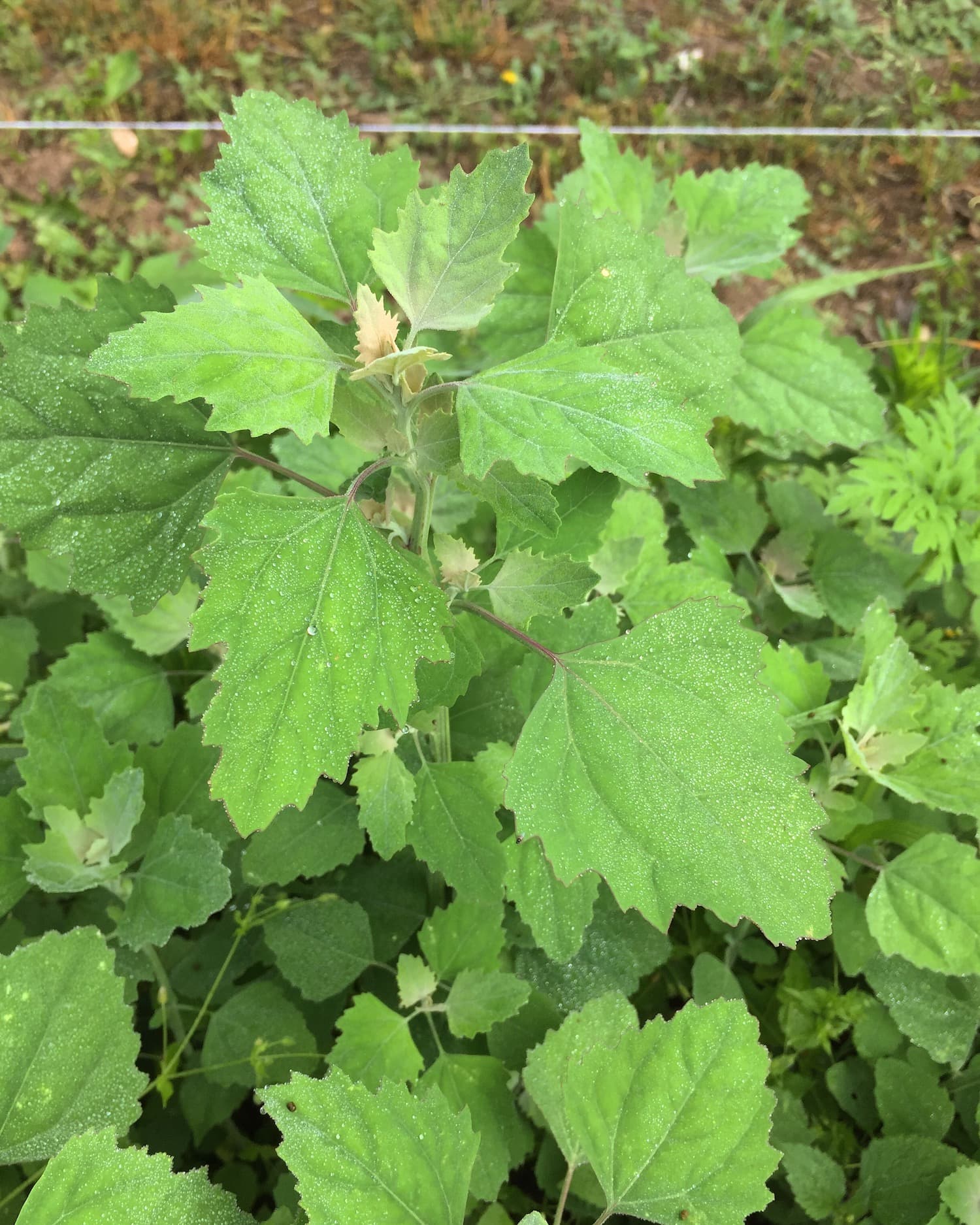How to Identify Lambsquarters — Foraging for Edible Wild Spinach Greens
- Authors
- Name
- Sam Sycamore
- @tanoaksam
- Published on
- Last updated
Table of Contents
- What is wild spinach?
- Is wild spinach edible?
- Key characteristics
- Etymology and taxonomy
- Common names
- Taxonomical lineage
- About the Chenopodium genus
- Where to find wild spinach
- When to gather wild spinach
- Why forage for wild spinach?
- How to harvest and prepare wild spinach
- How to sustainably work with wild spinach
- Wild spinach lookalikes
What is wild spinach?
Lambsquarters aka wild spinach is a very common garden weed. It's a highly nutritious, abundant, and hardy substitute for cultivated spinach.
Is wild spinach edible?
Yes. All parts are edible, including greens, stems, and seeds.
Key characteristics
- triangular "goosefoot" leaves with toothed margins
- leaves coated in a fine, waxy white powder, especially at growing tips
- stems often somewhat square with pale blue-green stripes and magenta-pink coloration at nodes and sometimes on petioles

C. album stem showing off its unmistakable colored stripes.
Etymology and taxonomy
Common names
Wild spinach, lambsquarters, lamb's quarters, fat hen, white goosefoot, pigweed, huauzontle.
All common names refer to several different species in the Chenopodium genus, which may be difficult to tell apart for the uninitiated. Thankfully, all are edible and can be used in similar ways.

C. berlandieri tends to have a shorter and skinnier growth habit than the wider-leaved C. album.
Taxonomical lineage
- Amaranthaceae (Amaranth) family
- Chenopodioideae (Goosefoot) subfamily
- Chenopodium genus
- Chenopodioideae (Goosefoot) subfamily
Source: Wikipedia
About the Chenopodium genus
The Chenopods used to be treated as their own family, but more recent taxonomies place them within the larger Amaranth family. Chenopodium as a genus is perhaps best known for C. quinoa, grown as a staple grain crop in South America and now popular worldwide as a healthy alternative to starchy grains. The most common wild species we find in the Northern Hemisphere include C. album, C. berlandieri, and C. giganteum.
The Goosefoot subfamily is also home to our domesticated spinach, Spinacia oleracea. Amaranthaceae contains many food plants and cherished ornamental flowers.

A typical scene on farms in North America in spring: C. album dominates freshly tilled soil.
Where to find wild spinach
Wild spinach is often found popping up in recently disturbed soil like garden beds, especially in lower, wetter areas. It's tolerant of marginal soils but prefers the more fertile, nitrogen-rich ground of farms and gardens—hence the common names "fat hen" and "pigweed," shared by a few related species, which allude to their ubiquity in agricultural fields.
C. album and its closely related cousins are among those plants who've been following H. sapiens around for so long that it's hard to say for sure where they originated. It is naturalized worldwide, primarily in the Northern Hemisphere, and extensively cultivated as a food crop in Northern India.

Young wild spinach seedlings demonstrating key traits early in development.
When to gather wild spinach
Lambsquarters begins to germinate in springtime right around the time that many cultivated greens get seeded and transplanted in the garden; this is April-May across most of North America. It will often outcompete domesticated veggies if not kept in check early in the season.
Greens and stem tips are best when harvested from spring through midsummer. Seeds are harvested in late fall.
Why forage for wild spinach?
Lambsquarters is one of the most abundant and versatile edible wild greens in the springtime through the summer. I have intentionally cultivated feral seedlings that popped up in my garden and helped them bush out to 7-ft-tall, 4-ft-wide behemoths with barely any effort at all.
The other common name, wild spinach, alludes to some of its culinary uses, and this is the name I presented to my farmer's market customers to give them a better sense of what they were getting into. The flavor is very mild and pleasant, not unlike cultivated spinach in terms of taste and texture.
(By the way: wild spinach was the second most popular crop I ever sold at the market, after wild pawpaws. Farmers, take note!)
Lambsquarters is yet another example of an extraordinarily common and nutritious edible wild plant that most farmers and gardeners exterminate in order to make room for their inferior lettuces and wimpy salad greens.

A common scene in gardens and farms in late spring: wild spinach dominates freshly tilled soil.
How to harvest and prepare wild spinach
Gather individual leaves anytime you find some you like, or cut the top 6-8" of any growing stem for faster harvesting.
Add raw leaves to salads and sandwiches. It also makes a great potherb anywhere you'd use domesticated spinach. I especially like to use the greens in omelettes and pesto.
Lightly sauté whole or chopped stems with leaves attached for an asparagus-like vegetable.
Wild spinach is closely related to quinoa and its seeds are similarly edible, though they require a fair amount of processing that I've never been equipped to do. But the immature seed clusters can be eaten raw or cooked, and while many will find them excessively bitter, I would suspect that is a clue to inform us that they are especially nutrient-dense.
How to sustainably work with wild spinach
Lambsquarters is an especially hardy and vigorous annual herb that will replace itself a thousand times over with seeds in the fall. Once established in the seed bank it will be nearly impossible to exhaust.
If you know a patch of garden soil where lambsquarters can be found, you can lightly till or rake the ground pretty much anytime from late spring through midsummer and let the plants take over from there.
Chenopodium species respond to pruning much the same as basil or other herbs: if you're familiar with basic pruning methods, you can make a single wild spinach plant bush out to produce a ton of food across the growing season. Simply snip the apical meristem at the tip-top of a young plant and watch its eager axillary buds take over!
Wild spinach lookalikes
None! You won't find another similar plant with that distinct white powdery look to it.
Foraging North America
Did you find this article helpful?
This is an excerpt from Foraging North America: The Botany, Taxonomy and Ecology of Edible Wild Plants.
Foraging North America is a 12-week crash course designed to arm you with a functional working knowledge of botany and taxonomy that you can take with you out onto the land to fast-track the ID process and boost your confidence when gathering wild foods for the first (or five-hundredth!) time.
You'll get a practical education in ecological literacy by applying the ethos of conservation through use—the (surprisingly) radical notion that humans can, in fact, have a positive impact on the environments that we move through.
Food is everywhere—you just need to know what to look for!